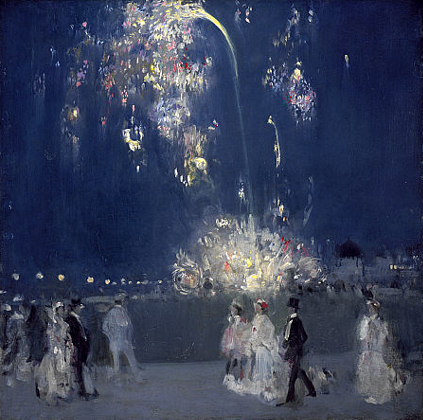'Scottish Art since 1900' at the Scottish National Gallery of Modern Art, Edinburgh.
J D FERGUSSON's Rhythm, 1911, takes centre-stage in 'Scottish Art since 1900'. A prime example of would-be Hibernian modernism, Fergusson's painting features a stocky academy nude, faceted for Cubist effect, in a flattened idyll rife with Gauguinesque flora. Staccato brushstrokes aim, as the picture's title sug-gests, to drum out a visual equivalent to syncopation. Fergusson's nude is an Eve for the eve of the Great War, rooted in the era of Isadora Duncan and the Ballets Russes. In her present context, dominating a room given over to 'The Modern Movement in Scotland', she takes on added significance - the awkward muse of Scottish modernism, perhaps, a concoction of swiftly assimilated influences.
Fergusson would later write the first (and, so far, only) account of twentieth-century Scottish art, Modern Scottish Painting (1943). The Scottishness of Scottish art, he argued, inhered in 'the Scots characteristic of independence and vigour'. His own art, one declaration of dependence after another, hardly serves as supporting evidence. Six years before painting Rhythm, his homage to the Post-Impressionists and Cubists, Fergusson pictured Dieppe, 14 July, 1905: Night. Fireworks light up a nocturnal sky behind nattily dressed promenaders, pure Whistler in the dark. A few years later he turned his hand to Leger-like machine-age painting, depicting Dockyards, Plymouth as a hive of quasi-abstract activity, cultivating effects of crisp geometry and dulled metallic sheen. Later still he reverted to mellowness, with quiet portraits such as In the Patio: Mrs Margaret Morris Fergusson.
The pattern of Fergusson's career - youthful experiment followed by the safe option - is hardly unique in the annals of Scottish modern art, at least on this showing. Bruce McLean has designed the trailing banners that hang from the portals of the...


